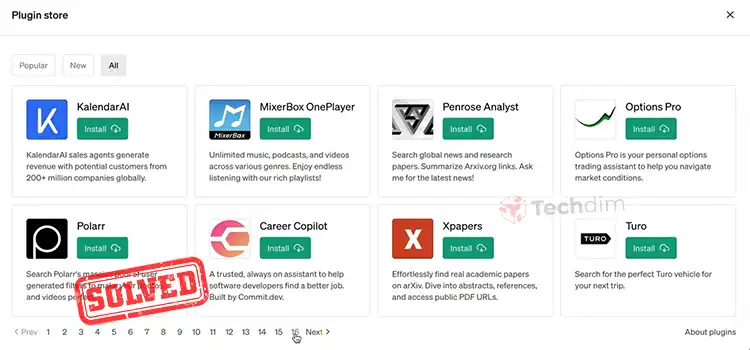Will AI Replace Graphic Designers? | Know the Fact!
With practically every tech giant pouring billions of dollars into it and Ai-powered tools and apps emerging left right and center, it’s only natural to worry about the future of creative works like graphics designing, or even writing content. And we don’t blame you for that. AI is intimidating. It can generate ideas, and create or generate designs.
So, will AI replace graphic designers? Well, not likely. Not unless you let it. you see, humankind’s creation of technology, historically evolved around one simple concept. That is to make our life easier. AI is no different. Below we’ve explained what kind of things AI is good at generating and what it cannot yet handle. Then we’ll explain why we don’t think that AI will completely replace graphic designers.

What’s AI and How It Generates Graphics?
From a technical standpoint, AI is nothing but a generative system where it is trained to mimic human behavior with millions of data points being fed. AI graphics generation involves using artificial intelligence algorithms to create or generate visual content such as images, videos, or animations. The whole process begins with a trained AI model that has learned from a large dataset of existing images and their characteristics.
With the given set of instructions, the AI uses its knowledge and preset patterns to create new images. It essentially mimics the way human artists observe and reproduces visual elements but in a computational and automated manner.
So, while it cannot technically replace human input, it can certainly affect the way we work. In the future, it’ll be used as a design tool to meet our workplace demands.
What AI is Good At?
Generative AI is scary because it can do a lot of things very well. So, here’s a list of things it is good at.
1. Variations
Once you feed it with a pattern, it can use it to generate millions of results within minutes. And companies like Ferrero Brands have already used it very successfully to create millions of unique patterns in a project called “Nutella Unica,” where it created seven million unique packaging for Nutella.
2. Using Multiple Variables
Once fed, the AI model can generate graphics by taking multiple variables as input. It can be styles, shapes, colors, or textures. The AI then can manipulate these variables very efficiently to create a wide range of outputs that corresponds to different combinations of those given variables.
What AI isn’t Good At?
Converting text to image is a great capability possess. However, the technology is not without its faults. Here’s a list of things that AI makes a blunder of especially during its earlier iterations.
1. Originality
AI doesn’t produce anything out of thin air. In fact, they are programmed to use reference images scrapped from the internet. Therefore, it lacks originality and the ability to create anything from scratch. It simply mashes up art that already exists on the internet.
2. Accuracy
If you have any prior experience with AI-generated art or graphics, you already know that it is far from accurate, even way off sometimes. Most popular AI graphics-generating tools, even after multiple iterations, lacks accuracy. Most of the time they struggle with complex structures and numbers.
So, even though AI can provide great concepts, the resulting image can be far from being usable.
3. Ambiguity and Biases
Expressing moral values in quantifiable terms is difficult. That’s why, teaching morality to AI to make it unbiased is way more difficult than it seems. Without actual consciousness, AI lacks its own moral values and social awareness. That’s why, AI-generated graphics can sometimes be inappropriate, offensive, or downright wrong to different social groups.
Knowing all these, let’s now dive into why we think AI won’t replace designers anytime soon.
Why AI Won’t Replace Graphics Designers?
A graphics designer’s skill goes way beyond his or her proficiency in software skills. Even though computers can learn design principles, it lacks the much-needed nuance and empathy. Graphics design is about problem-solving with social skills and abilities. AI can be a great tool for the brainstorming process of art or graphics creation, but it can’t replace human designers.
Designers play a crucial role in bringing the best designs to life, while AI can enhance the process with their assistance.
How AI Can Be a Great Tool for Designers?
Yes, AI presents a challenge, but it certainly won’t replace graphics designers if they can adapt and offer unique new value beyond routine tasks. AI can automate the process of whiteboarding and free designers from repetitive tasks. So, they can focus more on their creative strategy.
In the era of AI art, designers will see a paradigm shift. Their role will change from being the creator to the curator, designing the system in which the creation takes place.
How to Evolve and Stay Relevant?
Now that you know how the role of graphic designers will change with the adaptation of AI generative tools, let’s see what designers need to do to stay relevant and adapt to this new trend.
1. Learn and Understand Different AI Tools
Familiarize yourself with AI tools and capabilities. To start, learn about different types of AI and their applications. Explore designer-friendly resources and APIs (Application Programming Interface) like Amazon Intelligence, Google Cloud AI, Microsoft Cognitive Services, and IBM Watson to grasp the inputs and logic used in training AI models.
2. Integrate ethics into your design process
As AI ethics is still developing, it’s our responsibility to establish ethical standards and incorporate them into our designs. Just as we follow design principles, we should create ethical principles if they don’t already exist. Refer to existing frameworks like Microsoft AI principles or Google AI principles for proper guidelines.
3. Prioritize adaptability
AI enables designs that learn and adapt based on various variables. When designing, consider not only the static user experience but also how products dynamically adjust depending on changing contexts and user decisions. Embrace adaptability as a key aspect of your design approach.
4. Learn to Prompt
Master the art of prompting when utilizing AI in your creative process. How specific you can greatly influence how the final output will be. So, familiarize yourself with design elements used by AI tools, such as scale, space, typography, etc. That way, you can create a more effective prompt. With properly crafted prompts, you can come up with desired results more often.
Frequently Asked Questions and Answers
What is the future of AI in graphic design?
Most probably, AI will revolutionize graphics designs by empowering designers to test, iterate and detect emerging patterns and automate most of the tedious tasks. This will reduce the reliance on manual labor greatly.
Will AI replace UX designers?
While AI can replace a lot of data processing regarding UX designs, it cannot understand human emotions, behaviors, and needs that are required to design UX.
Will illustrators be replaced by AI?
It’s very unlikely that AI will replace human illustrators. While the technology has made significant progress, it still lacks the creativity and human touch required for illustrating something from the ground.
In Conclusion
No, AI will not replace graphics designers. However, it can certainly make designers obsolete, who aren’t well versed in AI. It will prove to be more and more valuable to designers as a tool to work more effectively and efficiently. In the end, graphics designers who are capable of using AI effectively are more likely to replace those who don’t.
Thanks for reading.
Subscribe to our newsletter
& plug into
the world of technology




